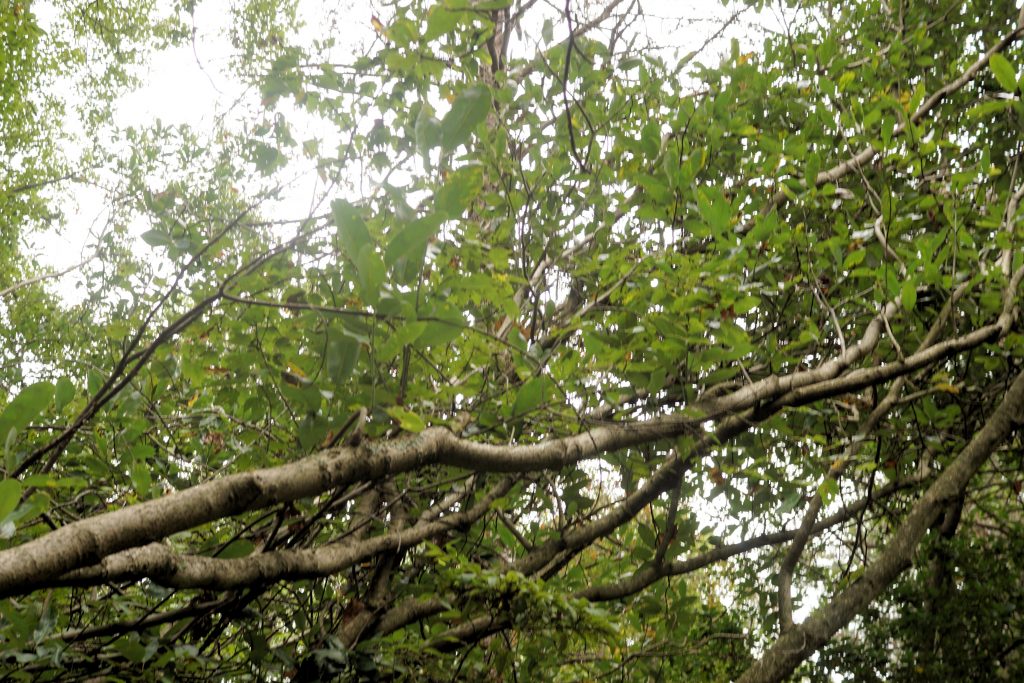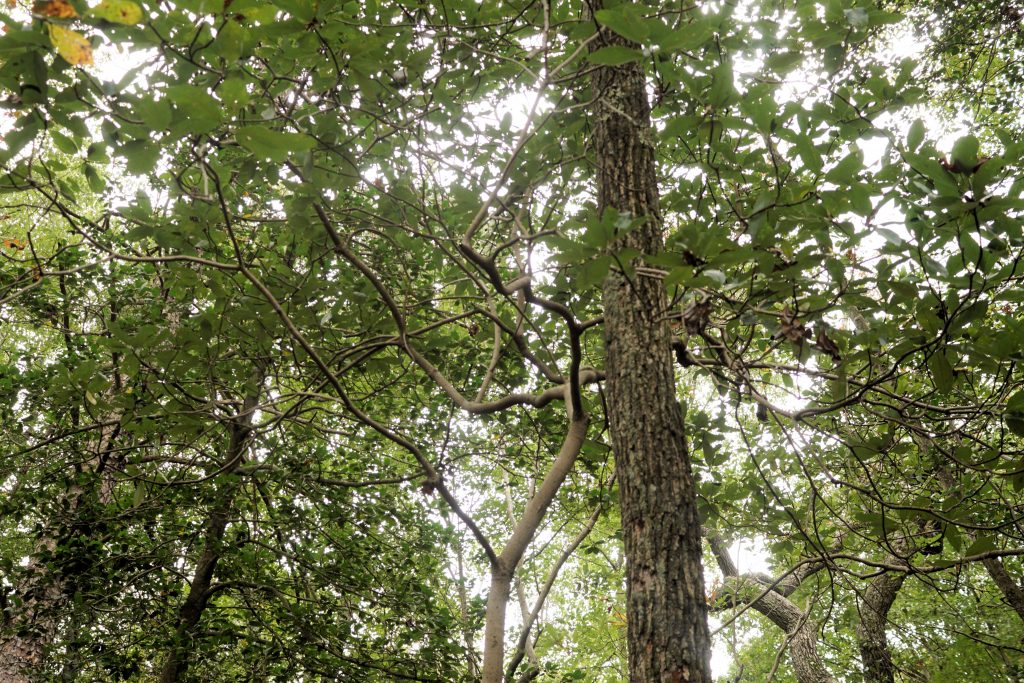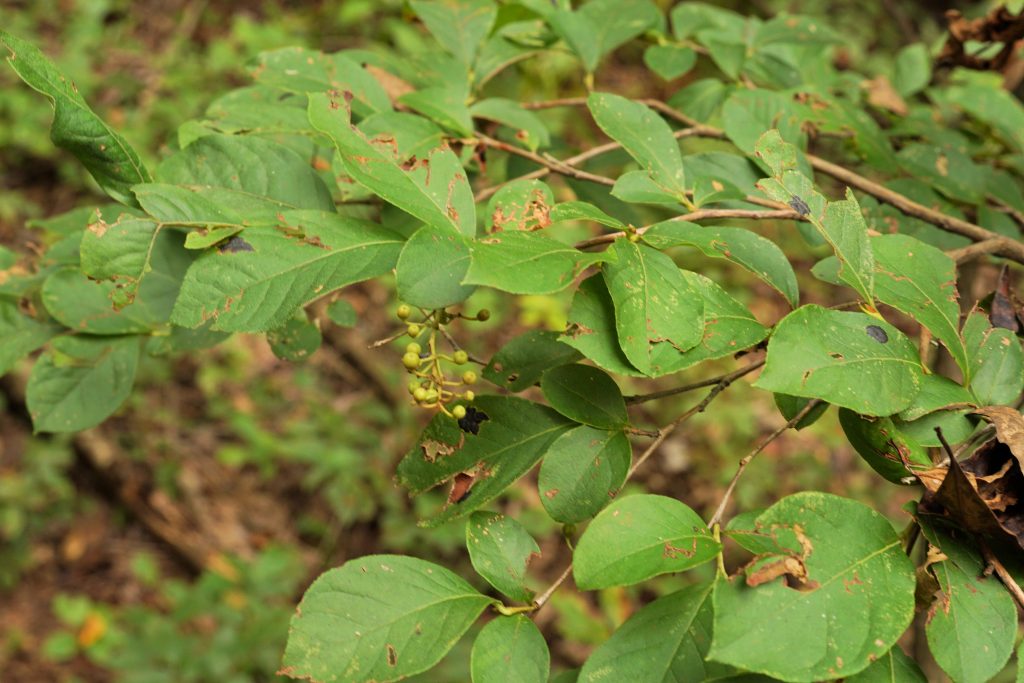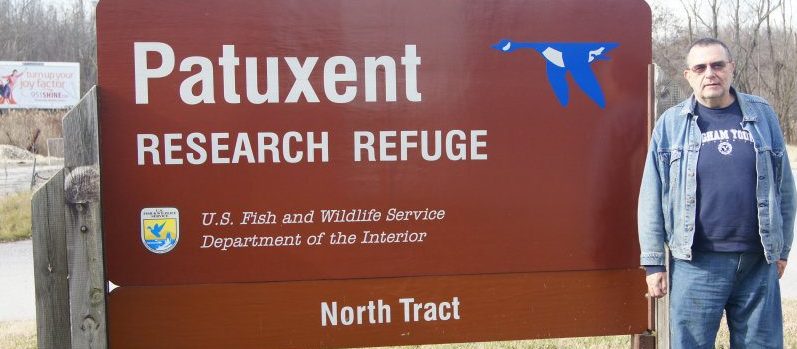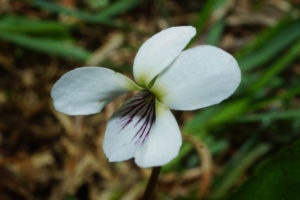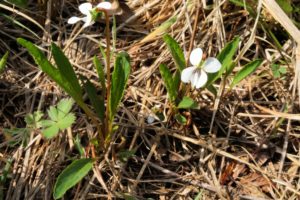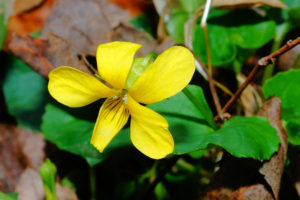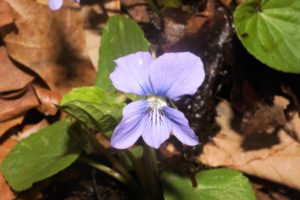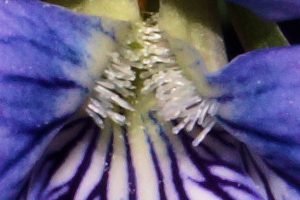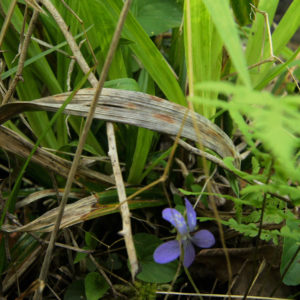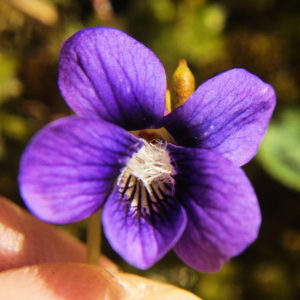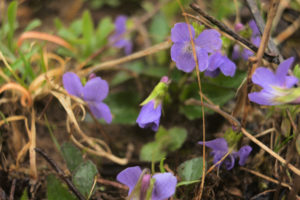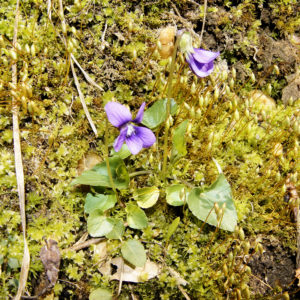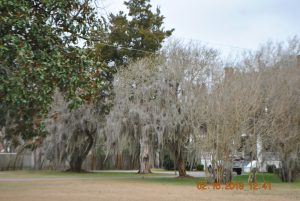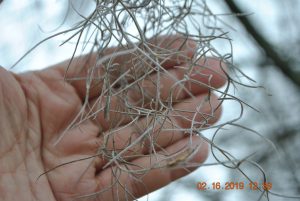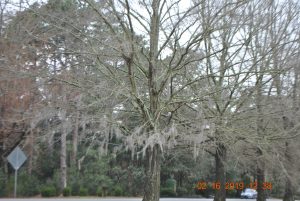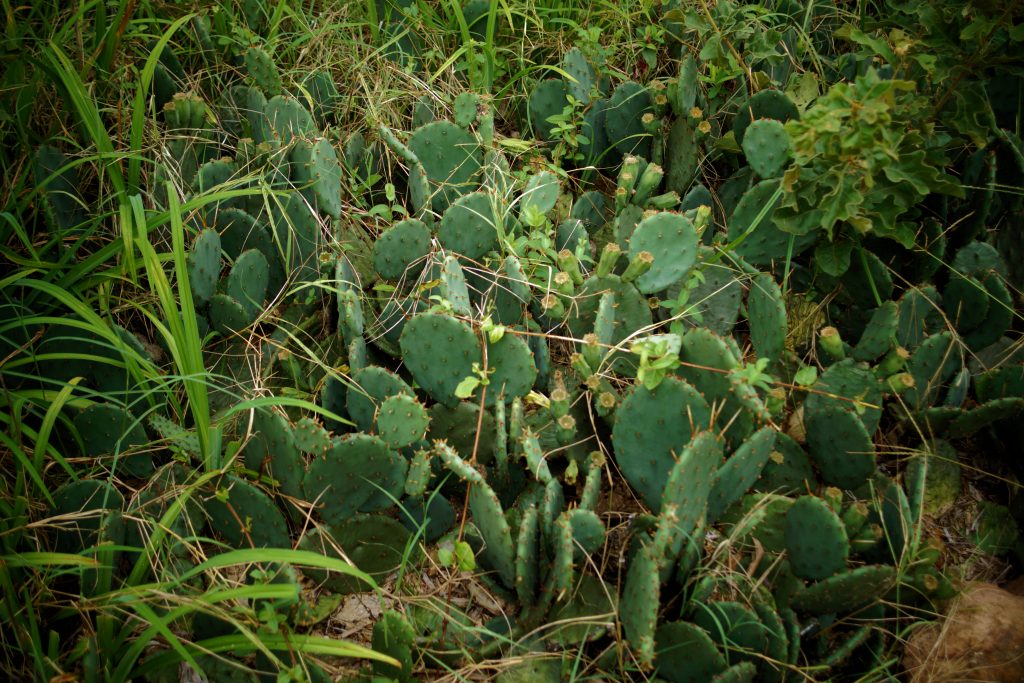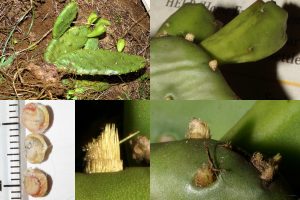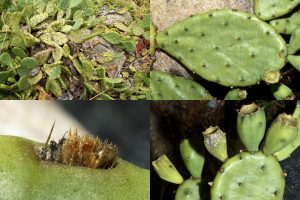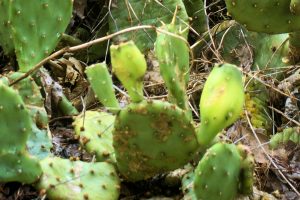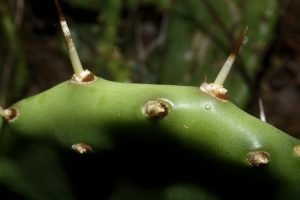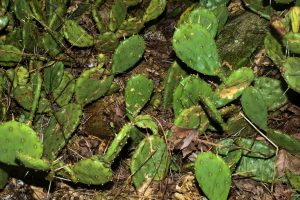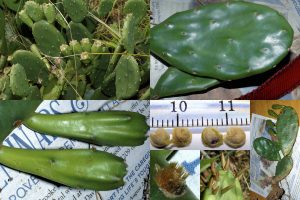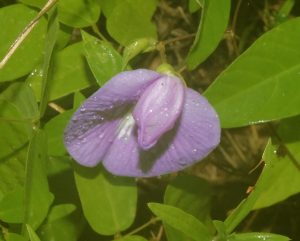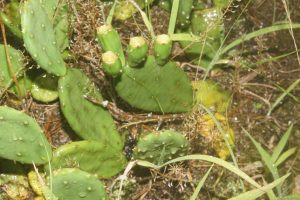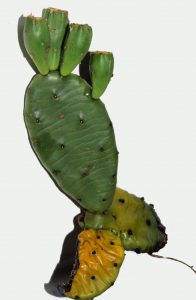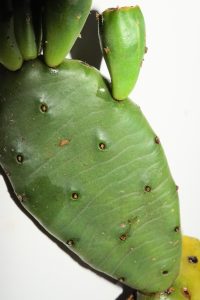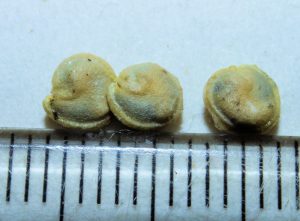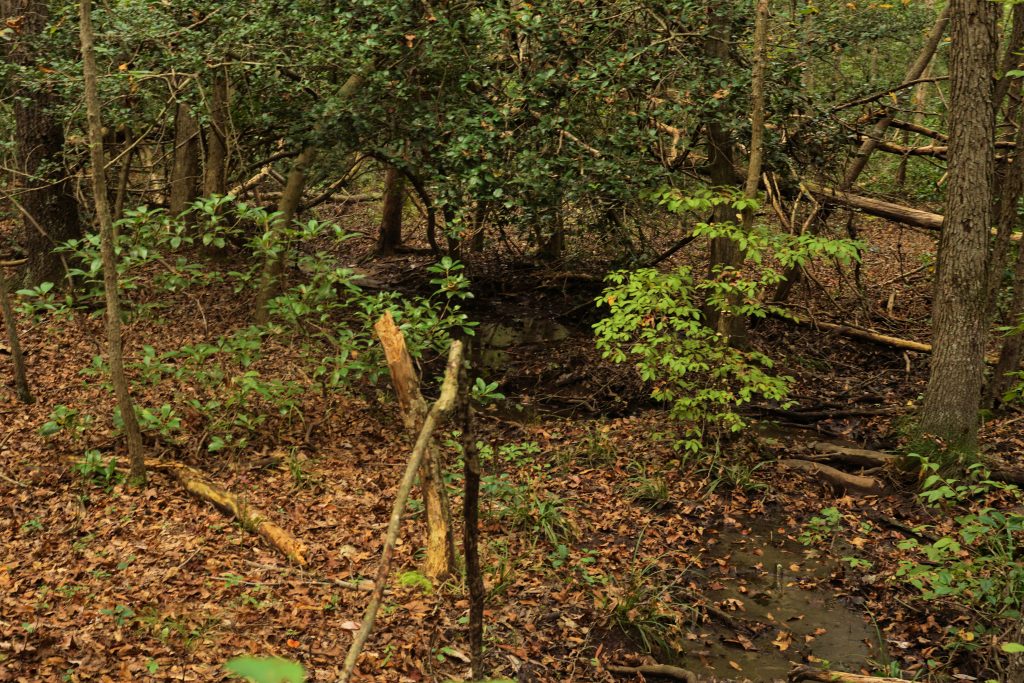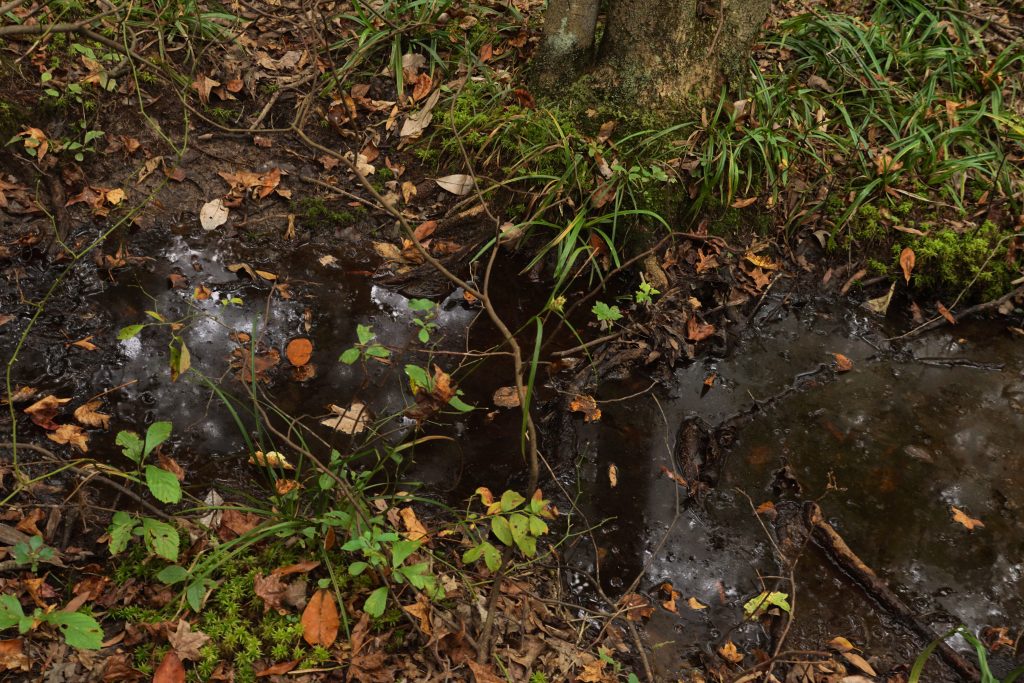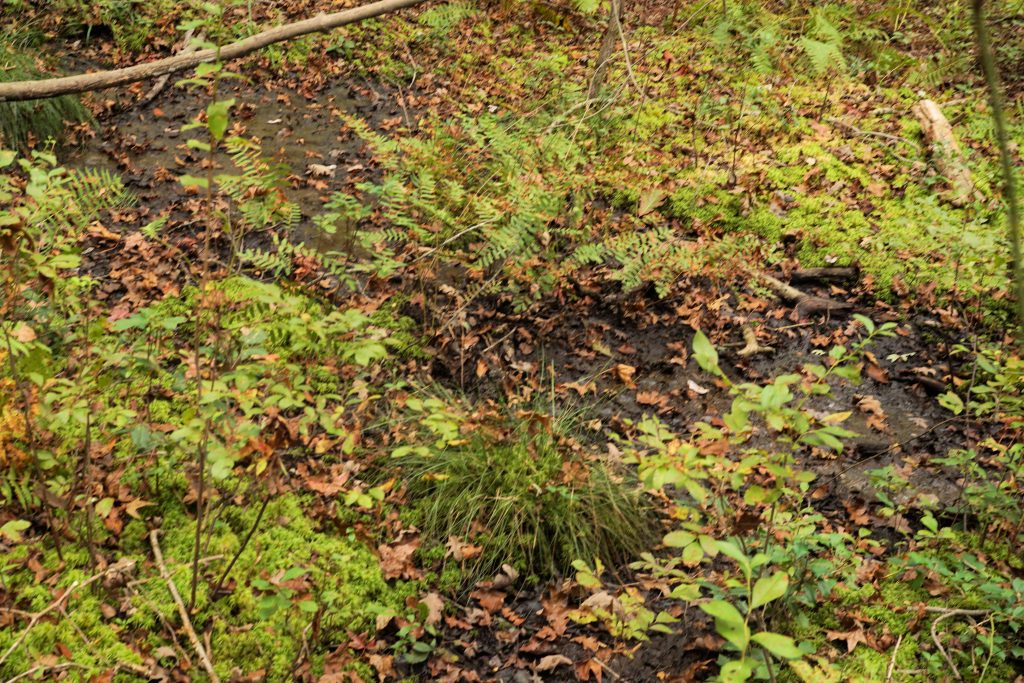Category Archives: Journal
Viola eriocarpa
Viola cucullata – Marsh Violet
Viola affinis – Sand Violet
Viola affinis or Sand Violet is an acaulescent violet found in the eastern part of North America from Quebec and Ontario in the south and Florida to Texas in the south. (Acaulescent means the flower rises from a non-leafy stem.) On the Patuxent Research Refuge, it is seen in wet sandy areas usually near seepages.

Spotlight on Christine McElroy
 As the lead of the refuge plant inventory project, I would like to formally acknowledge the important contribution that Christine McElroy has made and is making with restoring voucher specimens in the Patuxent Research Refuge Herbarium. The positive impact of her work cannot be overstated.
As the lead of the refuge plant inventory project, I would like to formally acknowledge the important contribution that Christine McElroy has made and is making with restoring voucher specimens in the Patuxent Research Refuge Herbarium. The positive impact of her work cannot be overstated.
Christine has faithfully come to the North Tract Visitors Contact Station almost every Wednesday afternoon since 2017 to repair the specimens and the specimen sheets. Some of the specimens have become loose and detached from their specimen sheets. She has repaired hundreds of these specimens by re-attaching them more firmly to the specimen sheets. This will ensure that the specimens will remain intact for many years to come.
She has also replaced several dozens of older specimen sheet labels which were starting to deteriorate because they are made of acidic non-archival paper. Replacing the labels is done by carefully taking off the old labels from the voucher sheets, photocopying the label’s images to acid-free archival paper, and attaching the new labels to the sheets. Since the new labels are photocopies of the originals, no pertinent collection information is lost. The old labels are filed separately so they are not lost. Replacing the older non-archival paper labels with newer acid-free archival paper labels will increase the durability of the labels. By repairing the specimens and replacing the labels, Christine is increasing the longevity of the specimens and is making the herbarium a more valuable resource for future researchers.
Christine deserves the recognition for her fine work, attention to detail, and devotion to making a good herbarium even better.
2018 Plant Inventory Progress Report – A Banner Year
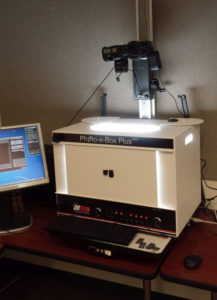
2018 was a banner year for the Patuxent Research Refuge (PRR) Plant Inventory Project (PIP) Team. The biggest event was the digital-imaging of about 4600 Refuge herbarium voucher sheets by the team. The PIP team appreciates Professor Maile Neel, Director of the Norton-Brown Herbarium, University of Maryland for her guidance and assistance in providing the equipment and space to image the voucher sheets and Dr. John Hall of the Mid-Atlantic Megalopolis Project (midatlanticherbaria.org) for his consultation with this part of the project. The PIP team also recognizes the Herbaria Consortium for providing the Internet portal, technical support, and computer resources to allow the images and accompanying data to be placed on the Internet.
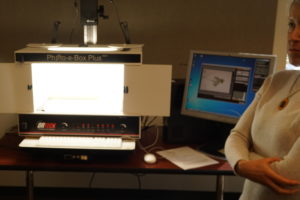 Marnie Whitlock and Elaine Nakash headed up this effort by spending several weekends and countless hours at the University of Maryland in College Park imaging the voucher specimens. They used professional equipment (MK Digital Direct Photo-eBox PLUS) to digitally image the specimens and convert them into a format that made them ingestible to the Consortium database. After each session, Bill Harms uploaded the images to the Consortium database and matched them to the accompanying collection data already on—line in the PRR Herbarium’s portal. The images and the data are accessible online for researchers to view and study.
Marnie Whitlock and Elaine Nakash headed up this effort by spending several weekends and countless hours at the University of Maryland in College Park imaging the voucher specimens. They used professional equipment (MK Digital Direct Photo-eBox PLUS) to digitally image the specimens and convert them into a format that made them ingestible to the Consortium database. After each session, Bill Harms uploaded the images to the Consortium database and matched them to the accompanying collection data already on—line in the PRR Herbarium’s portal. The images and the data are accessible online for researchers to view and study.

We used a barcode on each voucher sheet that corresponds with the specimens’ accession numbers to keep track of the sheets when we transported the between the Refuge and the University of Maryland.
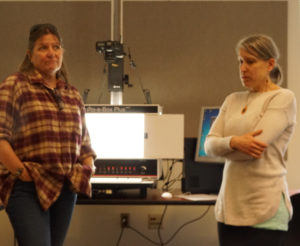

The project to image voucher specimens and make them available to the public on the internet is a joint effort of many educational institutions and governmental organizations throughout the USA and the world, and is funded in large part by the National Science Foundation. The Refuge Herbarium participates in this effort as a member of the North American Network of Small Herbaria (NANSH). The Refuge should be proud to be associated with this project.
Since 2017, PIP team member Christine McElroy, has devoted her Wednesday afternoons to mounting specimens and restoring a countless number of voucher sheets that needed repair. Through her efforts, the longevity of the specimens will be extended and the herbarium will be an even more valuable resource.
PIP team members collected an additional 200-plus specimens for the herbarium and added about 10 new species to the refuge list. Thank you to Dave Anderson and Matt Beziat for their assistance in this portion of the project.
We are also excited to welcome a Lichen Survey Project led by Helga Matausch.
The PIP Team participated in Refuge events at the Wildlife National Wildlife Center.

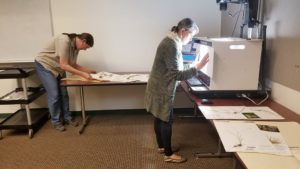
17 February 2019 – Palmettos in Myrtle Beach
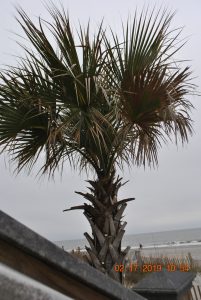 Today, my wife Becky and I paid a short visit to Myrtle Beach, South Carolina. Visitors to Myrtle Beach can’t help but notice the Palmettos planted around the city and other cities in the area. Here are some photos of a few of these trees. As far as I can determine, their scientific name is Sabal palmetto (Walt.) Lodd. (If this isn’t it, I would sure would like to know what it is.) There are forums on the internet which discuss the nativity of this in the Myrtle Beach area. They are definitely planted throughout the city, so I could see how they might not be considered to be native. Others state that they are native, and people have just planted them in areas where they were not naturally growing. Their native range is said to be in coastal areas from southeastern North Carolina to Florida and west along the Gulf Coast to Texas. Whatever is the case, it was fascinating to observe them. I was struck by the frond remnants found on many of them. They are called bootstraps. Some of the trees we observed had fruits still on them, and took some photos of them. We also noted a smaller species of Palmettos growing in the woods nearby. As far as I understand, they are probably Sabal minor or the dwarf palmetto. Wish I had more time to do some foraying.
Today, my wife Becky and I paid a short visit to Myrtle Beach, South Carolina. Visitors to Myrtle Beach can’t help but notice the Palmettos planted around the city and other cities in the area. Here are some photos of a few of these trees. As far as I can determine, their scientific name is Sabal palmetto (Walt.) Lodd. (If this isn’t it, I would sure would like to know what it is.) There are forums on the internet which discuss the nativity of this in the Myrtle Beach area. They are definitely planted throughout the city, so I could see how they might not be considered to be native. Others state that they are native, and people have just planted them in areas where they were not naturally growing. Their native range is said to be in coastal areas from southeastern North Carolina to Florida and west along the Gulf Coast to Texas. Whatever is the case, it was fascinating to observe them. I was struck by the frond remnants found on many of them. They are called bootstraps. Some of the trees we observed had fruits still on them, and took some photos of them. We also noted a smaller species of Palmettos growing in the woods nearby. As far as I understand, they are probably Sabal minor or the dwarf palmetto. Wish I had more time to do some foraying.
16 February 2019 – My first encounter with Spanish Moss (Tillandsia usneoides)
Today I had my first encounter with Spanish Moss (Tillandsia usneoides). We saw it growing on trees throughout Florence, South Carolina. Spanish moss frequently grows on trees in tropical and subtropical regions. Around Florence at least, they seem to be partial to the Southern Live Oak (Quercus virginiana). It is native to much of the Southern United States from Southeastern Virginia south to Florida and west to Arkansas and Texas. It also is native to Bermuda, Mexico, the Bahamas, South America, Central America, and the West Indies. It has reportedly become naturalized to Queensland, Australia and French Polynesia. It is not a true moss but rather it is an epiphytic flowering plant. Here are a few pictures we took of it. Some trees were almost completely covered with it.
8 October 2018 – Washington County Cactus Foray
Today, Joe Metzger and I went on a foray to locate two populations of cactus in Washington County, Maryland.
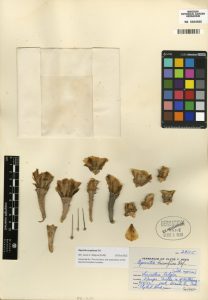
The first one was a reported population of Opuntia cespitosa in Kemps Mills where Clyde Reed collected a voucher specimen in June 1952. We drove the entire length of Kemps Mill Road and did not see any cactus. We also located Kemp Mill’s itself, but did not see a suitable habitat in the vicinity. Unfortunately, Reed’s voucher label does not reveal an exact location. The only real clue was a reference to “limestone ledges.”

Along Kemps Mill Road, we spotted a limestone cliff face which could have been the “limestone ledges” referred to by Reed on the voucher label. We make a cursory look at the cliff face and did not notice any spot that might have supported cactus. We could not see the upper parts of the cliff from the road. These areas are more sunny and might be a good place to look another time. The cliff face however sported a lot of interesting flora. It was located near a KOA campground and faced mostly to the west. We will attempt to locate the population again another time. Hopefully, we just missed finding it and the population is still around. If you have a good idea where it is located let us know.
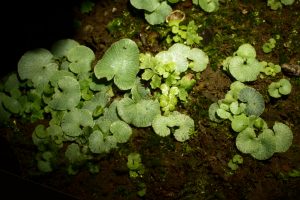
On the cliff face, we spotted some presumed fern gametophytes and several fall blooming species in the family. It looks like an interesting site to return to in other seasons.

We continued our foray to the Dam 5 area of the C & O Canal where there was a reported population of Opuntia humifusa s.s.This time we were successful. The cactus was located at the base of a retaining wall below a lock house. Based on the small size and location of the cactus population, we concluded that it was probably planted and not naturally occurring.

If you know of any other cactus populations in Washington County we would be interested in learning about them. There are some cactus populations in Allegany County which we will be trying to re-locate, probably next spring. If you think you might like to participate, there is plenty of time to plan a foray.
Here are some photos of other plants we saw while looking for the cactus.

Panicled Aster
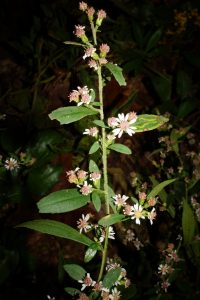
Calico Aster
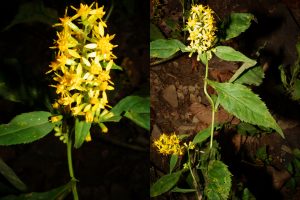
Zigzag Goldenrod
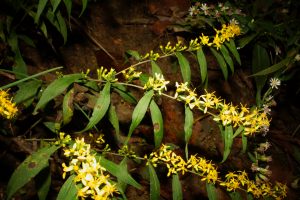
Blue Stemmed Goldenrod
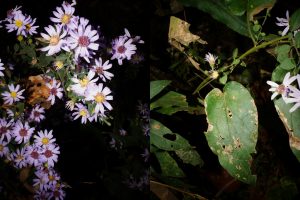
Short’s Aster

White Snakeroot
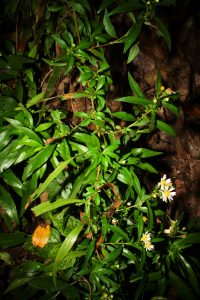
Unknown Aster
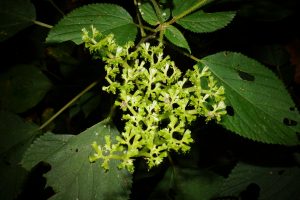
Canadian Wood Nettle

Whitestar
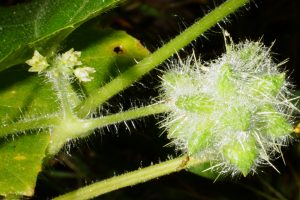
One-seeded Bur Cucumber or Star-Cucumber
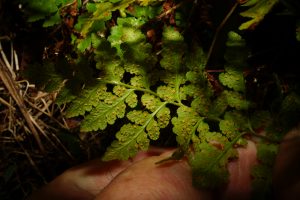
Bluntlobe Cliff Fern
25 August 2018 – Finding Cactus at Weinberg Park
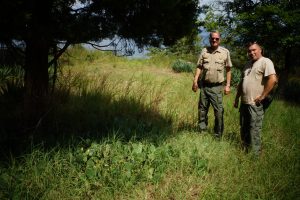
Had an awesome time with Rangers Matt Grey and Chris Winton of Anne Arundel County Park and Recreation this afternoon scouting out the cactus at Weinberg Park in Pasadena. The site was near an old homestead. We could see two stone columns which could have come from a gate entrance. I understand that there is other evidence of a homestead at the site.
 The site showed definite signs of anthropogenic disturbance likely from the folks who previously lived here. The soil was well-drained sand on a bluff above the bay. There is a high probability the cactus was planted and they were growing in an area about 15 feet by 15 feet. There were outlying scattered plants in the area as well.
The site showed definite signs of anthropogenic disturbance likely from the folks who previously lived here. The soil was well-drained sand on a bluff above the bay. There is a high probability the cactus was planted and they were growing in an area about 15 feet by 15 feet. There were outlying scattered plants in the area as well.
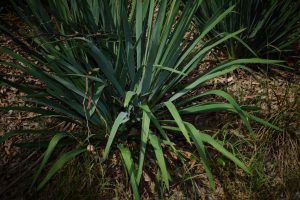
We also spotted some Yucca flaccida (weak-leaf yucca) which was planted nearby. This, when combined with the planting of cactus, suggests that someone wanted to create a desert-like appearance at this site.
The morphology of the plants conform with a determination of Opuntia humifusa s.s. We did not find spines on any of the plants and there were mostly 4 to 5 (6) areoles per diagonal row on the cladodes. The seeds were 4.0 to 4.8 mm long.
We plan to re-visit the site in the spring to note the flower coloration.
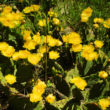
22 August 2018 – Maryland Cactus Sites
This is a working draft list of locations where cactus has been found in Maryland, excluding the Eastern Shore. (Eastern Shore sites may be added later.) If you know of a location not listed here, let me know at botanybill (at) verizon.net and I will put it on the list. Also if you would like to claim a site to watch, let me know.
Alleghany County
- Cumberland – near exit 43 on I-68.
- Flintstone – (at least three stations) – Opuntia humifusa s.s.
Anne Arundel County
- Arundel High School and Arundel Middle School – possibly mowed over –
- Global Command Antenna Field, Davidsonville – Jo Mercer
- Hancock’s Resolution – Field north of house – Not found – Extirpated
- Hancock’s Resolution – Planted in garden – Opuntia cespitosa – Chris WInton and Matt Grey
- Jug Bay, Parking Lot Meadow – Bill Harms
- Jug Bay, Sand Barrens, Parris Glendenning Area (Wayson’s Corner?) – Bill Harms (More info)
- Jug Bay, South Farm
- Milt’s Sand Pit, Sands Road – large population – old field – Opuntia humifusa – Bill Harms – (More info)
- Patuxent Research Refuge, Lake Allen – large population – Opuntia cespitosa with some putative introgression with Opuntia humifusa – Bill Harms (More info)
- Patuxent Research Refuge, East of Tipton Field – likely planted many years ago – >Opuntia cespitosa – with some putative introgression with Opuntia humifusa – Bill Harms
- Sandy Point State Park – Extirpated?
- Weinberg Park – Opuntia humifusa s.s. – probably planted
- Wooton’s Landing – assumed to be planted in two stations. Not found June 2019 – Possibly removed.
Baltimore County
- Cromwell Valley Park
- Factory Road – planted possibly from nearby wild stock – Opuntia cespitosa. (More info)
- Phoenix area – collected in 1986
Calvert County
- Broome Island
- Flag Ponds
Carroll County
Charles County
- Chapman State Park
Frederick County
- East of Emmitsburg
Howard County
- Main Street, Elkridge – Planted next to a parking lot – Opuntia humifusa s.s. (more info)
Montgomery County
- Bear Island
- Southern end of the Billy Goat A Trail in C&O Canal NHP
- Plummer’s Island – Extirpated
- River Road, SSW of Poolesville – Confirmed as Opuntia humifusa – Robert Ferraro
Prince George’s County
- Billingsley House
- MacGruder’s Landing
- Nottingham Road – apparently planted – tentatively Opuntia mesacantha ssp. mesacantha
- Priest Bridge
- Queen Anne Canoe Launch – open meadow – apparently Opuntia humifusa s.s.
- Rte 301 – small number of plants – planted
St. Marys
- Commander’s residence USN Solomon’s Recreation Area in Lawn
- Patuxent Naval Air Station, East side of Security Road at NE corner air station.
- Piney Point
Washington County
- Kemps Mill – None found on a re-visit to area with Joe Metzger in 2018. Possibly extirpated.
13 August 2018 – Queen Anne Canoe Launch
Had an awesome time today with Michael Ellis, park ranger and invasive plant specialist for the Maryland-National Capital Park and Planning Commission, Parks and Recreation. We visited two sites where prickly pear was growing.
FIRST SITE – The first site was an open meadow near the Queen Anne Canoe Launch Patuxent River Park. The meadow was a restoration project and had an old field look about it. Based on the fact that the cladodes had no spines and mostly four or five areoles per diagonal row, these plants appear to be Opuntia humifusa s.s. We will be returning in the spring to look for flowers in bloom.
 SECOND SITE – The second site was an old driveway off of US Route 301 in Bowie. The woods were overgrowing the driveway which was apparently no longer in use. We saw a few plants on the left side of the driveway, which we assumed to be planted by past owners.
SECOND SITE – The second site was an old driveway off of US Route 301 in Bowie. The woods were overgrowing the driveway which was apparently no longer in use. We saw a few plants on the left side of the driveway, which we assumed to be planted by past owners.
Many thanks to Michael for taking time out of his job to show me around.
11 August 2018 – Cactus in Elkridge
11 August 2018 – Cactus on Factory Road
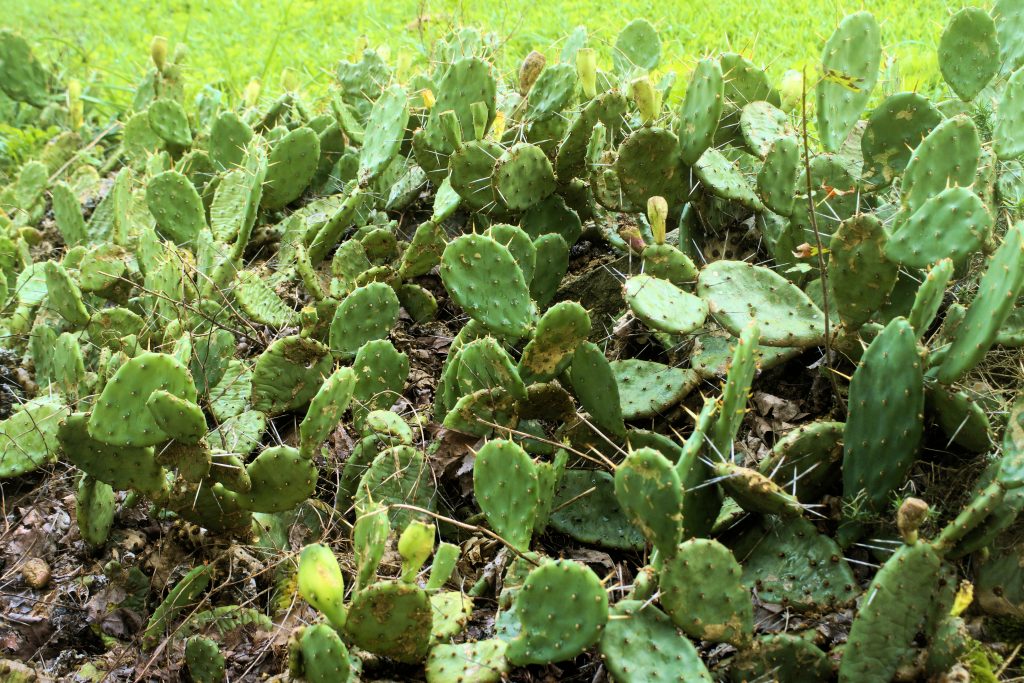 This morning I attempted re-visit a site where Clyde Reed collected some cactus in 1981 which has been determined by Opuntia expert Lucas Majure to be Opuntia cespitosa. The site was on Factory Road in Glen Arm, Maryland (Click here for Reed’s record.). The voucher label described the site as an stone outcrop.
This morning I attempted re-visit a site where Clyde Reed collected some cactus in 1981 which has been determined by Opuntia expert Lucas Majure to be Opuntia cespitosa. The site was on Factory Road in Glen Arm, Maryland (Click here for Reed’s record.). The voucher label described the site as an stone outcrop.
Although I am not absolutely certain that I found the population from which Reed obtained his voucher specimen, it could be. The cactus I spotted was growing along a stone retaining wall. The morphology of these plants seems to conform with Opuntia cespitosa. I talked with the landowner Ken, and he told that his wife planted them many years ago. He believed that the original stock for the plants may have come from the nearby woods, but he was not certain. So, the plants I spotted should be considered to be cultivated. But the question of whether or not this species is native to Maryland is still unclear because we do not know if Reed collected his voucher from the cultivated plants I spotted this morning or if he collected his voucher from naturally occurring plants which may have been growing in the nearby woods.
Another re-visit to this site is planned for next May or June to look at the coloration of the flowers and to obtain more information about the possible native occurrence of this species in the nearby woods.
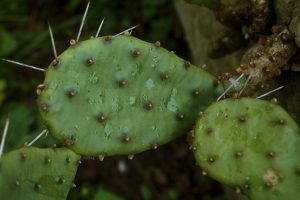

7 August 2018 – Cactus Foraying near Merkle Wildlife Sanctuary
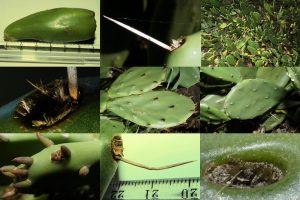 After learning about some cacti located south of Merkle Wildlife Sanctuary, David Anderson, Matthew Beziat, and I went on a foray to see if we could locate them.
After learning about some cacti located south of Merkle Wildlife Sanctuary, David Anderson, Matthew Beziat, and I went on a foray to see if we could locate them.
We found the cactus on a south facing slope beside Nottingham Road adjacent to a farm. The presence of spines and three or four areoles per diagonal row at the middle of the cladodes suggests that they are Opuntia mesacantha ssp. mesacantha. The clump was about 20 feet by 20 feet and seemed out of place. The plants looked like someone was weeding them and probably planted.
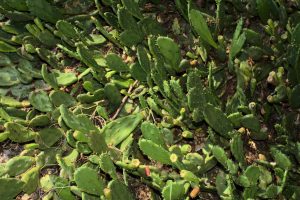 A special thanks for Esther Woodworth for letting us know about the plants and for Joe Metzger for providing the directions.
A special thanks for Esther Woodworth for letting us know about the plants and for Joe Metzger for providing the directions.
A trip in the spring when they are in bloom is planned.
3 August 2018 – Cactus Foraying at Wooton’s Landing
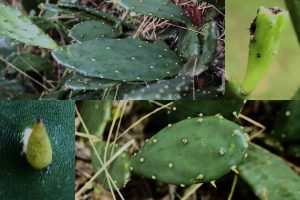 This time Matt Beziat and I forayed the Wooton’s Landing Park to look for some cactus that Matt had spotted previously. We found it along the perimeter trail which parallels Sands Road. The small number of plants at this site were atypically elongated because they were growing in the shade. On the way out of the park, we spotted another patch under a guardrail by the parking area.
This time Matt Beziat and I forayed the Wooton’s Landing Park to look for some cactus that Matt had spotted previously. We found it along the perimeter trail which parallels Sands Road. The small number of plants at this site were atypically elongated because they were growing in the shade. On the way out of the park, we spotted another patch under a guardrail by the parking area.
The plants were spineless and had three to four areoles per diagonal row. This conforms with a determination of Opuntia humifusa s.s.
28 July 2018 – Cactus at Jug Bay Wetland Sanctuary Parking Lot Meadow
Today, Matt Beziat, Dave Anderson, and I paid a visit to the meadow next to the Jug Bay Wetland Sanctuary Center parking lot to look for the cactus reportedly there. The meadow was well maintained with plenty of native plants. While walking around the meadow, we met up with Kerry Wixted who also happened to be in the area.
 We spotted some cactus around the perimeter of the meadow on the opposite side of the parking lot. Someone had also planted some cactus along a fence across the road from the meadow. The cactus was apparently O. humifusa s.s. Most of the cladodes had four areoles per diagonal row with a few which had three or five. We did not see any plants with spines.
We spotted some cactus around the perimeter of the meadow on the opposite side of the parking lot. Someone had also planted some cactus along a fence across the road from the meadow. The cactus was apparently O. humifusa s.s. Most of the cladodes had four areoles per diagonal row with a few which had three or five. We did not see any plants with spines.
A spring visit is planned to examine the coloration of the flowers.
21 July 2018 – Foraying at Parris Glendening Nature Preserve, Jug Bay
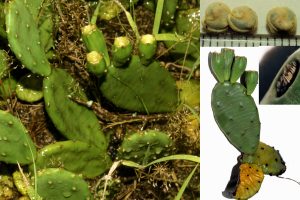 Despite some rain, heavy at times, had a awesome time today meeting up with Joe Metzger and Karyn Molines to foray the Parris Glendening Nature Preserve, Jug Bay. We hiked about one mile to an area called the “Sand Barrens” to look for some prickly pear cactus. It was an open clearing with sandy soil in the middle of pine-oak-maple woods.
Despite some rain, heavy at times, had a awesome time today meeting up with Joe Metzger and Karyn Molines to foray the Parris Glendening Nature Preserve, Jug Bay. We hiked about one mile to an area called the “Sand Barrens” to look for some prickly pear cactus. It was an open clearing with sandy soil in the middle of pine-oak-maple woods.
The cactus is definitely in the Opuntia humifusa complex, but determining which species was problematic. These plants were spineless and had three to four areoles per diagonal row at the widest part of the cladodes. So, this could be Opuntia humifusa s.s. with three or four areoles per row, or Opuntia mesacantha with no spines. Or it could be something else… Further investigation is needed.
To get a clue about which species this could be, it would be useful to examine two historical collections of cacti in Wayson’s Corner area. The Parris Glendening Nature Preserve is in the general Wayson’s Corner area. As the Nature Preserve was not in existence when these two vouchers were collected, it is possible that these vouchers may have collected on what is now the Nature Reserve. Unfortunately, the exact locations where these vouchers were collected are unknown, so it is also possible that they may have been collected somewhere outside of what is now the Nature Preserve. Regardless, the vouchers could be from the same basic genetic stock.
- In 1950, L. B. Smith collected a voucher specimen in Wayson’s Corners, which he determined to be Opuntia humifusa. Click here to see the voucher. (NOTE: There are no visible spines on this specimen.)
- In 1969, Clyde Reed collected a specimen in Wayson’s Corner, which he determined to be Opuntia humifusa. Lucas Majure later determined that specimen to be Opuntia mesacantha. Click here to see this voucher specimen. (NOTE: robust spines, which are indicative of O. mesacantha in available keys, are not present on this specimen. However, a few short barbs which are larger than the glochids or bristles are visible on close examination.)
On the way back to our cars, we found a patch of Centrosema virginianum – Spurred Butterfly Pea, a Maryland State S2 plant (threatened species).
14 July 2018 – Cactus at Milt’s Sand Pit
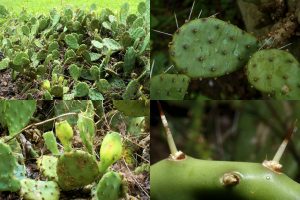 Today Sam Droege showed me a location where some Opuntia was growing along the east side of the Patuxent River along Sands Road in Davidsonville, MD in Anne Arundel County. There were scattered patches of cactus growing along the access road at the site, but the bonanza was about ⅓ of a mile from where we parked the car on Sands Road. Cactus was all over the place. We did not have an accurate way to measure the area, but estimated the cactus covered at least 5 or 6 acres. The habitat was an old field type in clearings with sandy soil. The area was an old sand borrow pit with evidence of sand having been moved around around in the past.
Today Sam Droege showed me a location where some Opuntia was growing along the east side of the Patuxent River along Sands Road in Davidsonville, MD in Anne Arundel County. There were scattered patches of cactus growing along the access road at the site, but the bonanza was about ⅓ of a mile from where we parked the car on Sands Road. Cactus was all over the place. We did not have an accurate way to measure the area, but estimated the cactus covered at least 5 or 6 acres. The habitat was an old field type in clearings with sandy soil. The area was an old sand borrow pit with evidence of sand having been moved around around in the past.
The plants seem to key out to Opuntia mesacantha because the cladodes were spineless and there were three or four (not five) areoles per diagonal row. Closer examination of the plants in this population is needed and a trip to investigate the flowers is planned for next spring.

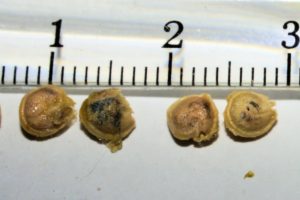
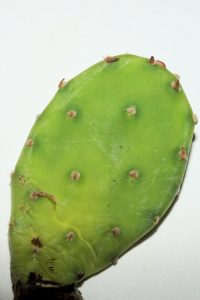
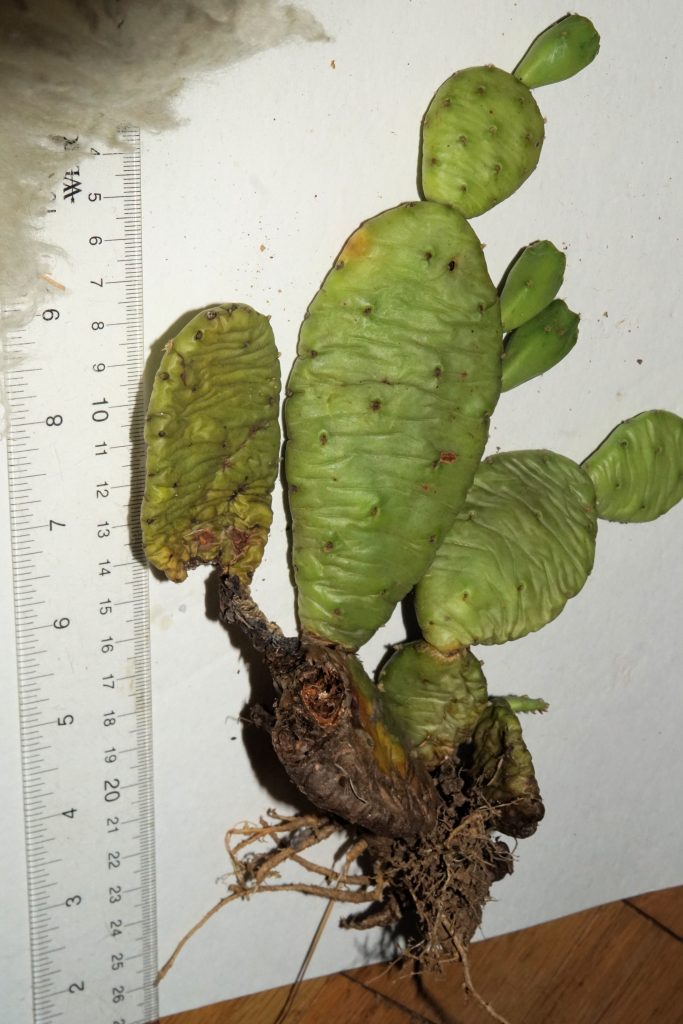

22 September 2017 – Hidden Bog – A New Discovery

Dave Anderson and I spent some time this afternoon locating a previously undocumented Magnolia seepage bog that was recently discovered by the Patuxent Research Refuge supervisory wildlife biologist Sandy Spencer and biologist John Bourne on the Refuge’s North Tract.
The area was very pristine with no noticeable infestation of exotic plant species. We estimated that the bog covered an area of about 1 or 2 acres (a more accurate measurement will be done later.)
This is a fine example of the numerous seepage bogs found on the refuge.
The following species of plants were sighted:
Clethra alnifolia
Magnolia virginiana
Nyssa sylvatica
Liquidambar styraciflua
Ilex opaca
Osmundastrum cinnamomeum
Osmunda regalis
Anchistea virginica
Carex ssp.
Quercus palustris
Pinus virginiana
Smilax glauca
A more complete inventory will be done later. (Scroll down to see more photos of the bog.)
